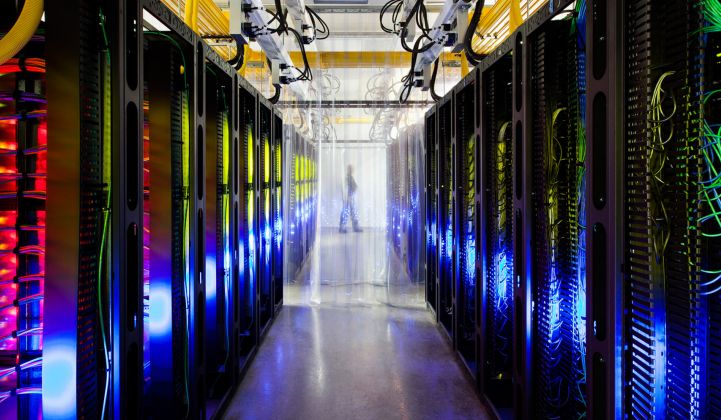Google will purchase the bulk of electricity produced by the Björkvattnet onshore wind farm as part of its major renewable energy spending spree.
The Swedish deal was negotiated with GE Renewable Energy, which backed the project’s developers and provided turbines for the 175-megawatt project. Power from the site will be used for Google’s regional data centers.
Neha Palmer, director of operations at Google, said the company is trying to add renewable capacity where it uses it. A quick glance at the distribution of its global data centers and its wind and solar investments would suggest that policy is being delivered on.
Google’s European wind and solar purchases overlap neatly with its data centers in Ireland, Belgium, the Netherlands, Finland and Denmark. Data centers require huge volumes of power, much of which is used for cooling. Scandinavia is proving a big winner in the data center market with low ambient temperatures and high renewable energy availability proving attractive with Google, Microsoft and other big operators.
The Björkvattnet deal is one of 18 announced earlier this month as Google completed a total of 1.6 gigawatts' worth of renewable energy procurement on three continents.
The project was developed by Vindparken and WindSpace, and is owned by the private equity firm InfraVia Capital Partners.
GE’s 5.3-megawatt Cypress turbines are being installed at the site, which is expected to begin commercial operation next year.
Europe’s polar PPA market
Following the earlier takeoff of the U.S. market, Europe is enjoying a corporate power-purchase agreement boom of its own, albeit one which is far from uniform in its makeup. Different offtakers, technologies and market conditions have made the continent’s PPA landscape hugely varied.
In the south, Spain’s vast pipeline of solar power projects is attracting diverse corporate attention. Contracts have been signed with steel giant ArcelorMittal, food distribution firm Uvesco, retail bank Kutxabank and telecom firm Euskaltel.
Farther north, the U.K. has seen consumer-facing brands like Unilever, Mars and the major supermarket chains engaging with the market for both wind and solar.
In Northern Europe, wind dominates. Several of Scandinavia's mining and materials companies have made moves already. The aluminum giant Alcoa has more than 800 megawatts of PPAs in place in Norway.
There is scope for more demand from tech firms in the future too, as Google’s deal with GE demonstrates. Cisco estimates annual average growth in Western European data centers of 17% from 2016 to 2021; it expects the lion’s share to be built in Scandinavia. Earlier this year Microsoft selected Sweden for a clutch of “sustainable” data centers that will be 100% renewable-energy powered. Facebook has invested almost $1 billion in a pair of data centers in Luleå, Sweden.
In most cases, corporate PPAs provide a long-term financial guarantee for the project’s investors that can soften any regulatory fluctuations and help push a project into the realms of bankability. In some markets the economics haven’t made sense or the regulatory framework for PPAs is absent.
Germany’s attractive subsidy regime has rendered PPAs unnecessary — so far. According to the law firm Bird & Bird, 4 gigawatts of onshore wind capacity reaches the end of its support at the end of 2020. Another 2.4 gigawatts will be looking for post-subsidy deals each year thereafter. Bird & Bird expects this to drive German PPA deals in the near future.
***
Related research: 'Analysis of Commercial and Industrial Wind Energy Demand in the United States' (Wood Mackenzie)




